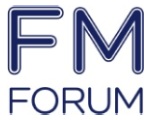Facilities asset management is an essential component of successful business operations, ensuring that tangible assets are maintained, tracked, and utilised effectively. Choosing the right solution(s) is paramount to ensuring efficiency, cost-effectiveness, and longevity of your assets. Here’s a guide to help you make an informed choice, based on input from delegates and suppliers at the Facilities Management Forum…
- Determine Your Needs:
- Asset Types: Understand the kinds of assets you have. Whether they are IT equipment, vehicles, machinery, or real estate, the solution you choose should cater specifically to your assets.
- Scale: Consider the size of your operations. Solutions vary for small businesses versus large enterprises.
- Integration Capabilities:
- The solution should easily integrate with other systems in place, such as your Enterprise Resource Planning (ERP) or Customer Relationship Management (CRM) systems. This ensures smooth data flow and reduces manual entry.
- User Interface and Experience:
- Opt for a solution that’s user-friendly and requires minimal training. An intuitive dashboard, easy navigation, and accessible features can save significant time and reduce errors.
- Customisation:
- Your business is unique. The solution should offer customisable features to suit your specific needs, whether it’s custom fields, reports, or notifications.
- Cloud-Based vs. On-Premise:
- Cloud-Based: Offers flexibility, remote access, and is typically subscription-based. It’s updated automatically, ensuring you always have the latest features.
- On-Premise: Installed on company servers, it may offer more control over data, but might require manual updates and might incur more upfront costs.
- Scalability:
- As your business grows, so will your assets. The solution should be scalable, accommodating growth without requiring a system overhaul.
- Reporting and Analytics:
- Data-driven insights can significantly optimise your asset management. Ensure the solution offers comprehensive reporting tools, visual analytics, and can generate custom reports.
- Support and Training:
- Vendor support is crucial, especially during the initial stages. Opt for vendors that offer robust support, training resources, and have a reputation for excellent customer service.
- Cost:
- While cost is a significant factor, it shouldn’t be the only one. Look for solutions that offer value for money. Consider both initial costs and long-term expenses, such as updates, support, and additional features.
- Security and Compliance:
- Protecting your asset data is paramount. Ensure the solution adheres to industry-standard security protocols. Additionally, it should help your business remain compliant with relevant regulations, particularly if you operate in sectors like healthcare or finance.
- Vendor Reputation:
- Do your due diligence. Research vendor reputation, read reviews, and perhaps even reach out to current clients to gauge their satisfaction levels.
A facilities asset management solution is not just a tool but an investment in the efficiency and longevity of your business assets. By considering the above points and aligning them with your business objectives, you’re well on your way to making a choice that will serve your business well into the future.
Are you looking for Asset Management solutions for your business? The Facilities Management Forum can help!






